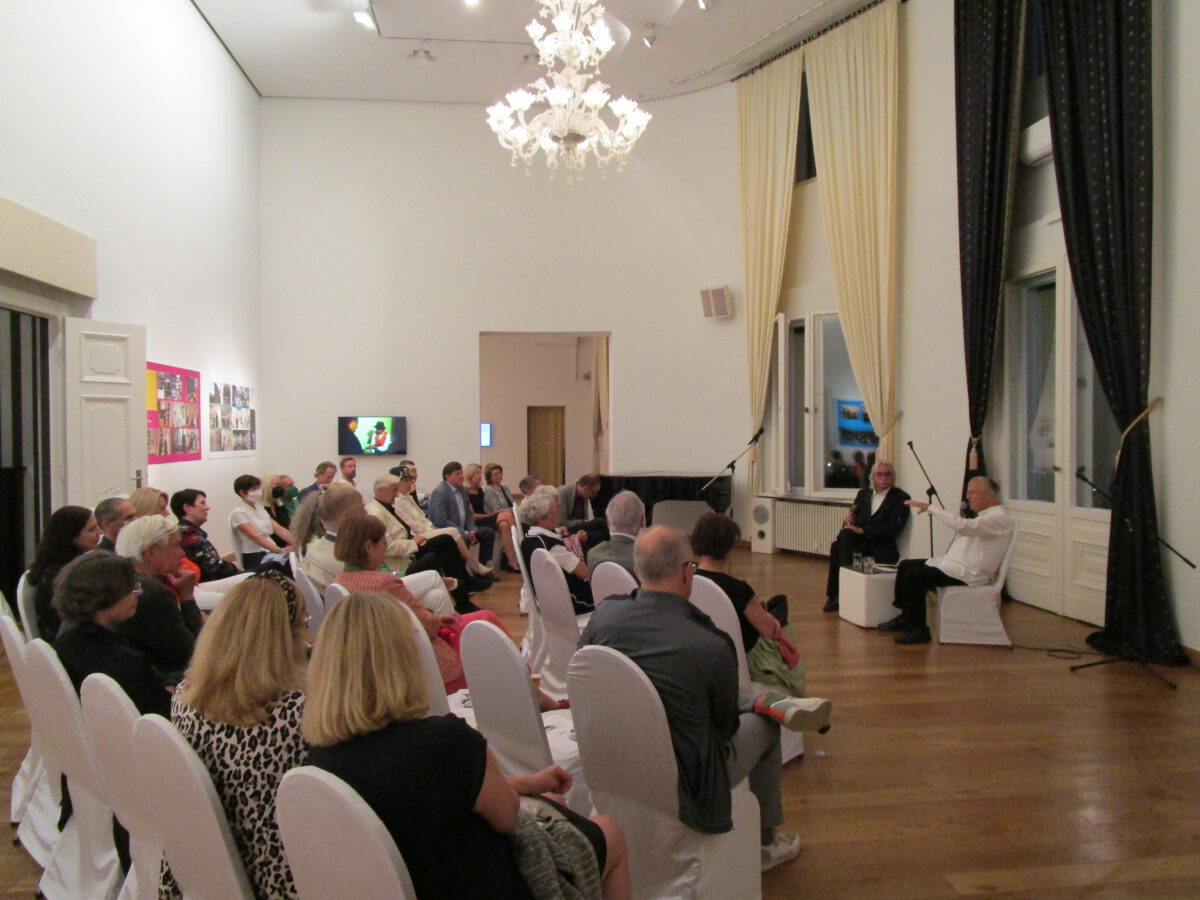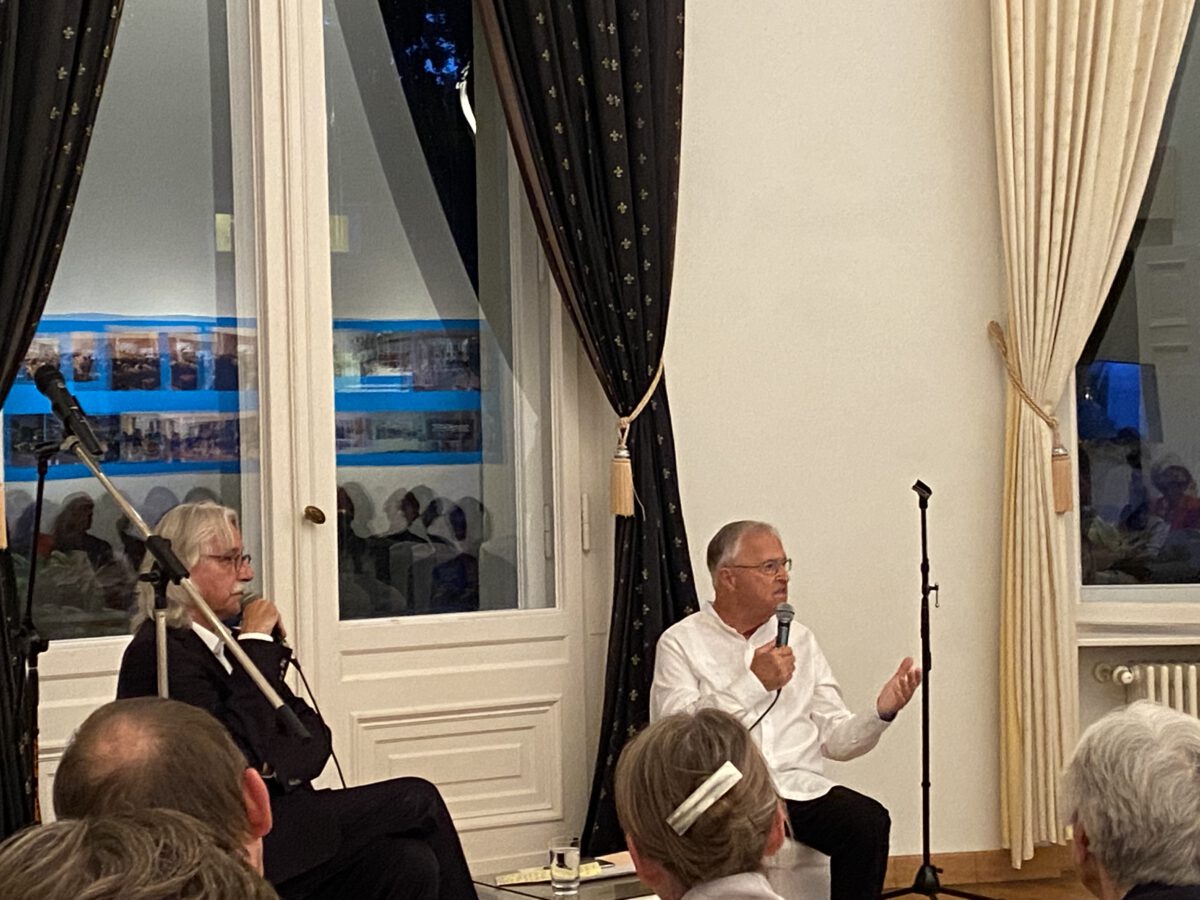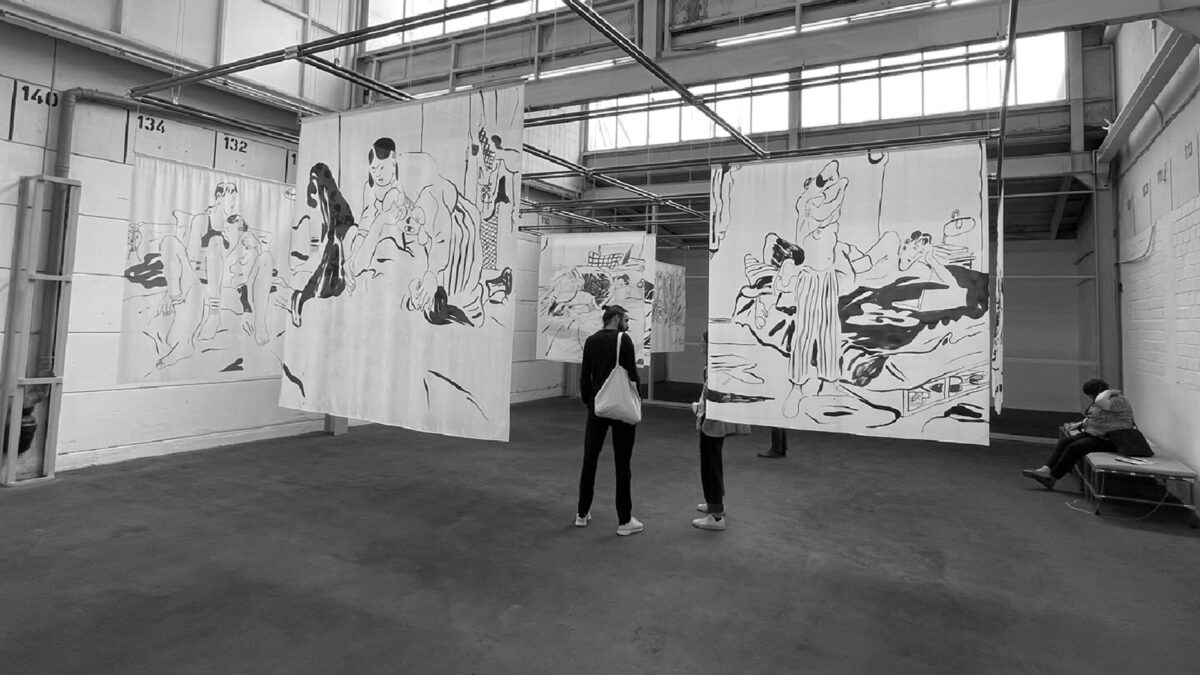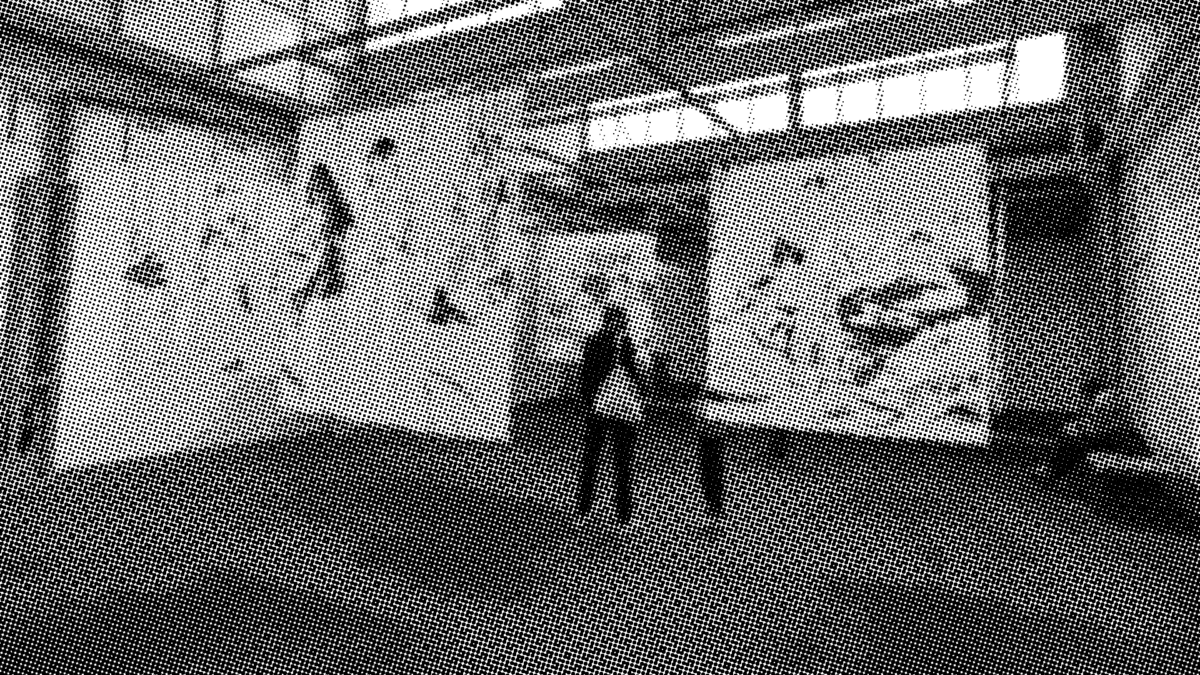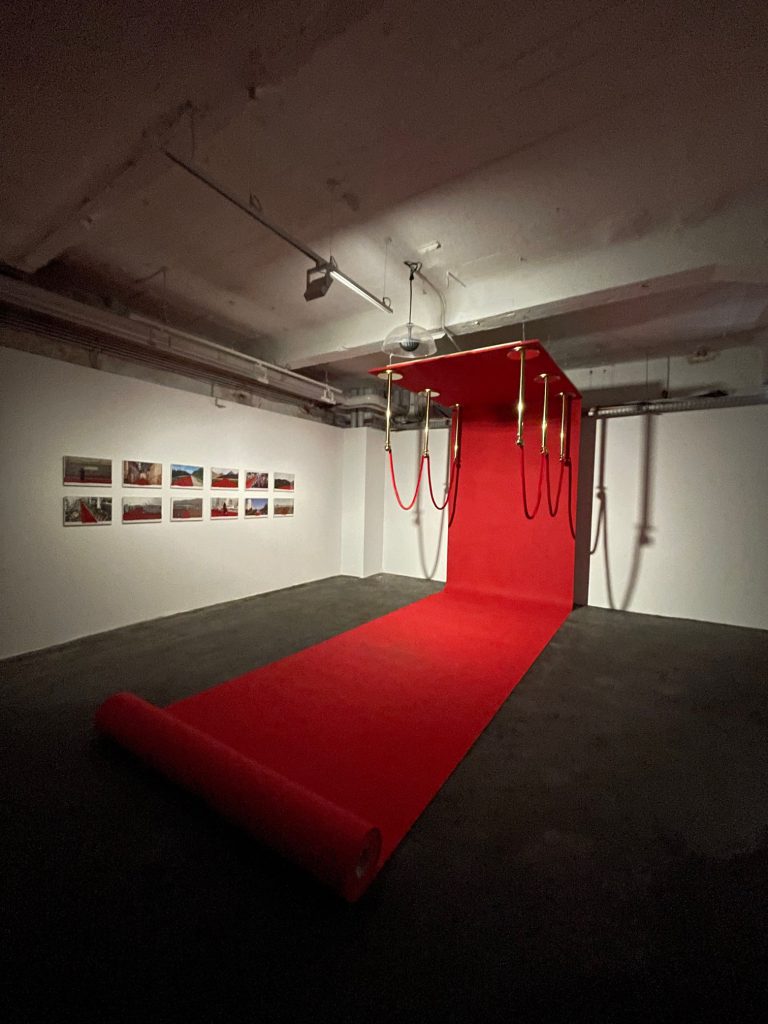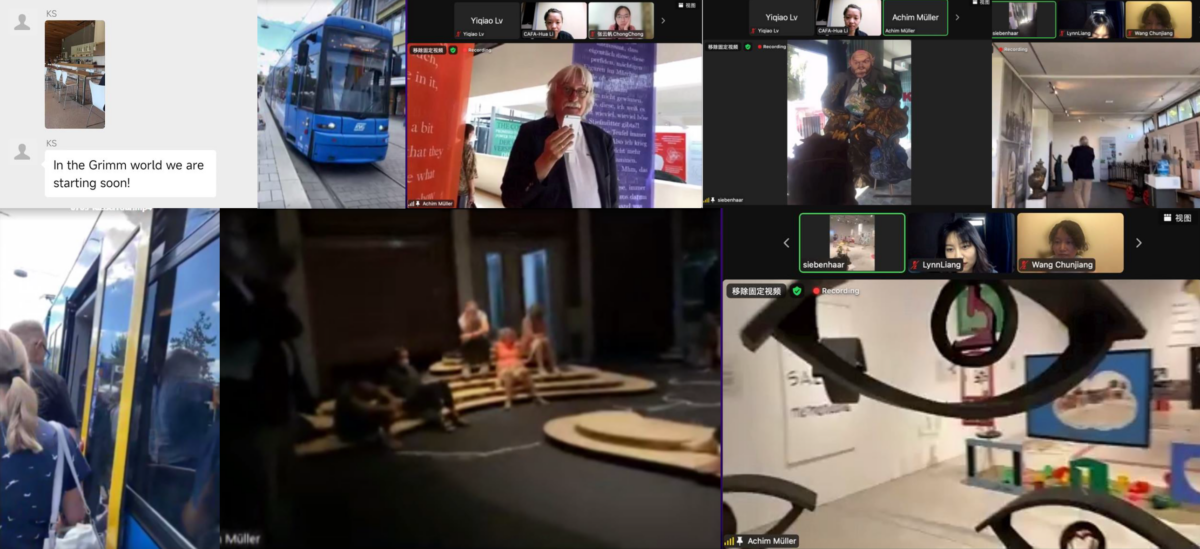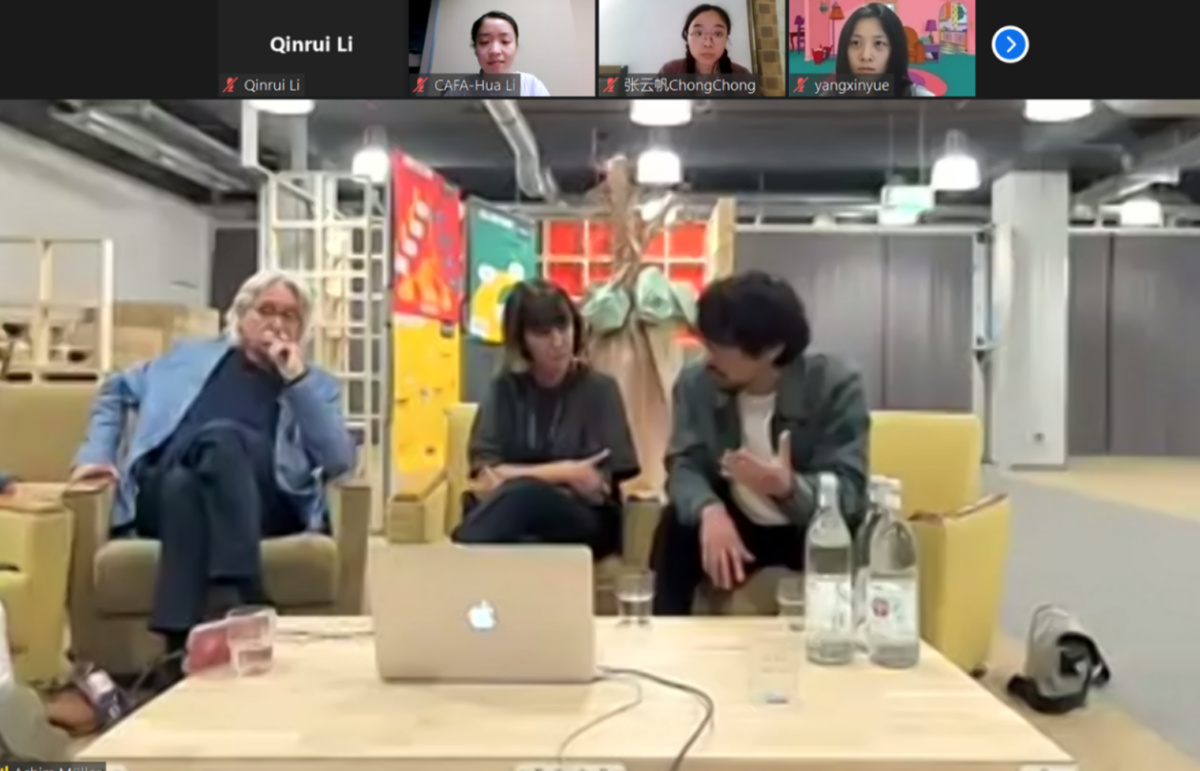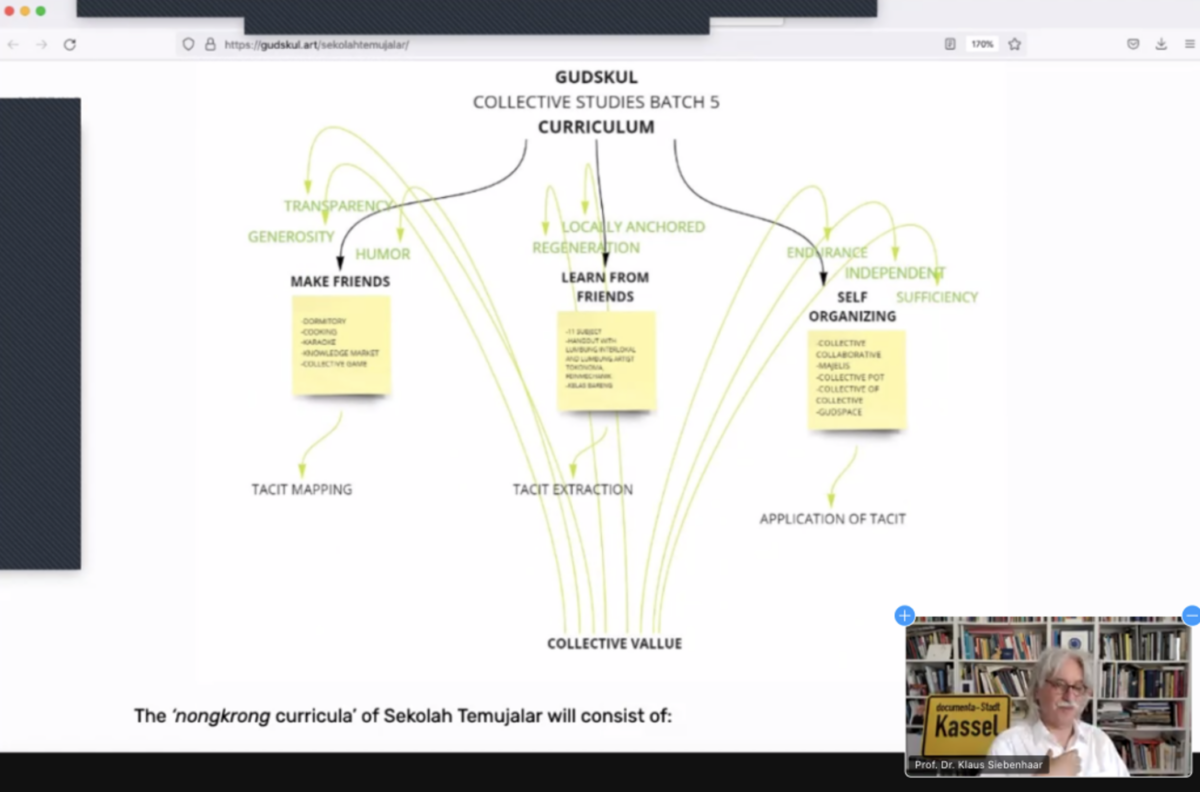Faszinosum und Kontroverse
Ausstellung und Diskussion zur documenta
Es war ein besonderer documenta-Abend im Löwenpalais der Kunststiftung Starke im Berliner Grunewald, der Kassel mit Peking und der deutschen Hauptstadt verbunden hat.
Die dokumentarische Ausstellung „documenta goes China 2017-2022“ bildete den Rahmen für die Diskussionsrunde zur aktuellen Situation der documenta fifteen.
„documenta goes China“
Die mit Fotos, historischen Filmsequenzen und Trailern kuratierte Pop-Up-Ausstellung vermittelt anhand von drei sehr unterschiedlichen Projekten ein Stück Rezeptionsgeschichte der documenta in China. Die bislang größte historische Schau zur Geschichte der Kasseler Weltkunstausstellung, „Mythos documenta. Arnold Bode und seine Erben“, wurde 2017 im CAFA Museum in Peking auf über 3.000 qm gezeigt und hatte mit hunderten von Objekten, Materialien und Fotos aus dem documenta archiv in Kassel erstmals für ein weitgehend junges chinesisches Publikum die documenta präsentiert. In ihren Voraussetzungen, künstlerischen Entwicklungslinien, kuratorischen und edukativen, aber auch zeitgeschichtlichen Zusammenhängen. Weit über 30.000 Besuche in vier Wochen dokumentieren das große Interesse, das auch in der für Shanghai neu zusammengestellten Version zu verzeichnen war. Die von Klaus Siebenhaar (für die Freie Universität Berlin) und Yu Ding (Central Academy of Fine Arts (CAFA), Peking) verantwortete Ausstellung gilt innerhalb der chinesischen Curatorial Studies als Musterbeispiel einer forschungs- und archivbasierten Ausstellungspraxis.
Wie auch die beiden bereits unter Pandemiebedingungen in der Residenz der Deutschen Botschaft in Peking im September 2021 eröffnete Doppelausstellung „Joseph Beuys und die documenta“/“Cosmos Beuys“ sowie das große documenta fifteen-Seminar im Juni/Juli 2022, das von den chinesischen Studentinnen in eine Ausstellungsmontage verwandelt wurde, vermittelt sich über diese von Dimensionen wie Formaten sehr unterschiedlichen documenta-Vorhaben drei wesentliche chinesische Rezeptionshaltungen:
• Die kontemplativ-heilende Kraft der Kunst, ihre ästhetische wie emotionale und soziale Wirkungsmacht in inszenierten Innen- wie Außenräumen.
• Die Transformation einer ganzen Stadt über künstlerische Interventionen: Kassel als „exhibition hall“.
• Die positive Vereinnahmung, die aktive individuelle wie kollektive Rolle der Besucher und die daraus entstehenden „Atmosphären“.
Alle drei Ausstellungen dokumentieren die geographische Verbindung Kassel-Berlin-Peking, sie basieren auf der kontinuierlichen Kooperation zwischen Institutionen der drei Städte: Freie Universität Berlin, Institut für Kultur und Medienwirtschaft Berlin, documenta Archiv Kassel, Central Academy of Fine Arts (CAFA) Peking, sowie der Deutschen Botschaft in Peking.
Und für alle drei Projekte gilt, dass sie mit deutschen und chinesischen Studierenden realisiert wurden.
Der politische Dialog:
Klaus Siebenhaar im Gespräch mit Hans Eichel
Hans Eichel hat als Kasseler Oberbürgermeister, hessischer Ministerpräsident und deutscher Finanzminister über Jahrzehnte aktiv und direkt die documenta begleitet, Kontroversen, Konflikte und Krisensituationen zu bewältigen gehabt. Gerade als Politiker waren für ihn dabei die Unabhängigkeit der künstlerischen Leitung und die künstlerische Freiheit im allgemeinen immer unantastbar und verbindlich. Die Auseinandersetzungen um Walter de Marias „Erdkilometer“, der Auftritt der „Staatskünstler der DDR“ oder die Beuysschen „7000 Eichen“ blieben stets als Bürgerproteste im kunstpolitischen Kontexten, ließen sich über Diskussionen und Kommunikation entschärfen und „einfangen“. Die Skandalisierung der Antisemitismusvorwürfe stellen in ihrer Unfähigkeit zum Dialog, ihrer „Hermeneutik des Verdachts“ (Armin Nassehi) ein Novum dar. Für Hans Eichel wie für Klaus Siebenhaar tragen auch die ideologisch zugespitzte „Blasenbildung“, die zum Teil gewollte Unschärfe zentraler Begriffe (Rassismus, Antisemitismus, globaler Süden) und die komplexen weltanschaulichen Kontexte (French Theory, angewandter Postmodernismus, Postcolonial Studies u.ä.) erheblich zu polemischen Zuspitzungen, Empörungswellen, Simplifizierungen bei.
Einig waren sich beide in der Zukunft der documenta: Die documenta 16 findet 2027 in Kassel statt, und sie darf organisatorisch wie inhaltlich nicht im Rahmen staatlicher Bevormundung und Intervention im Verständnis des öffentlich-rechtlichen Rundfunks oder im Stil des „betreuten Kuratierens“ (Siebenhaar) realisiert werden.
Die Diskussion schloss mit einem engagierten Plädoyer beider Redner dafür, auch im Konflikt die künstlerische Freiheit zu wahren. Konflikte und notwendige Debatten mit Haltungen wie denen des indonesischen Kollektivs ruangrupa, dem die künstlerische Leitung documenta fifteen übertragen wurde, sollten auf der Basis gegenseitigen Respekts und friedliche Koexistenz ausgetragen werden, nicht aber in politische Einflussnahme und uninformierte und unreflektierte Paternalisierung münden.
